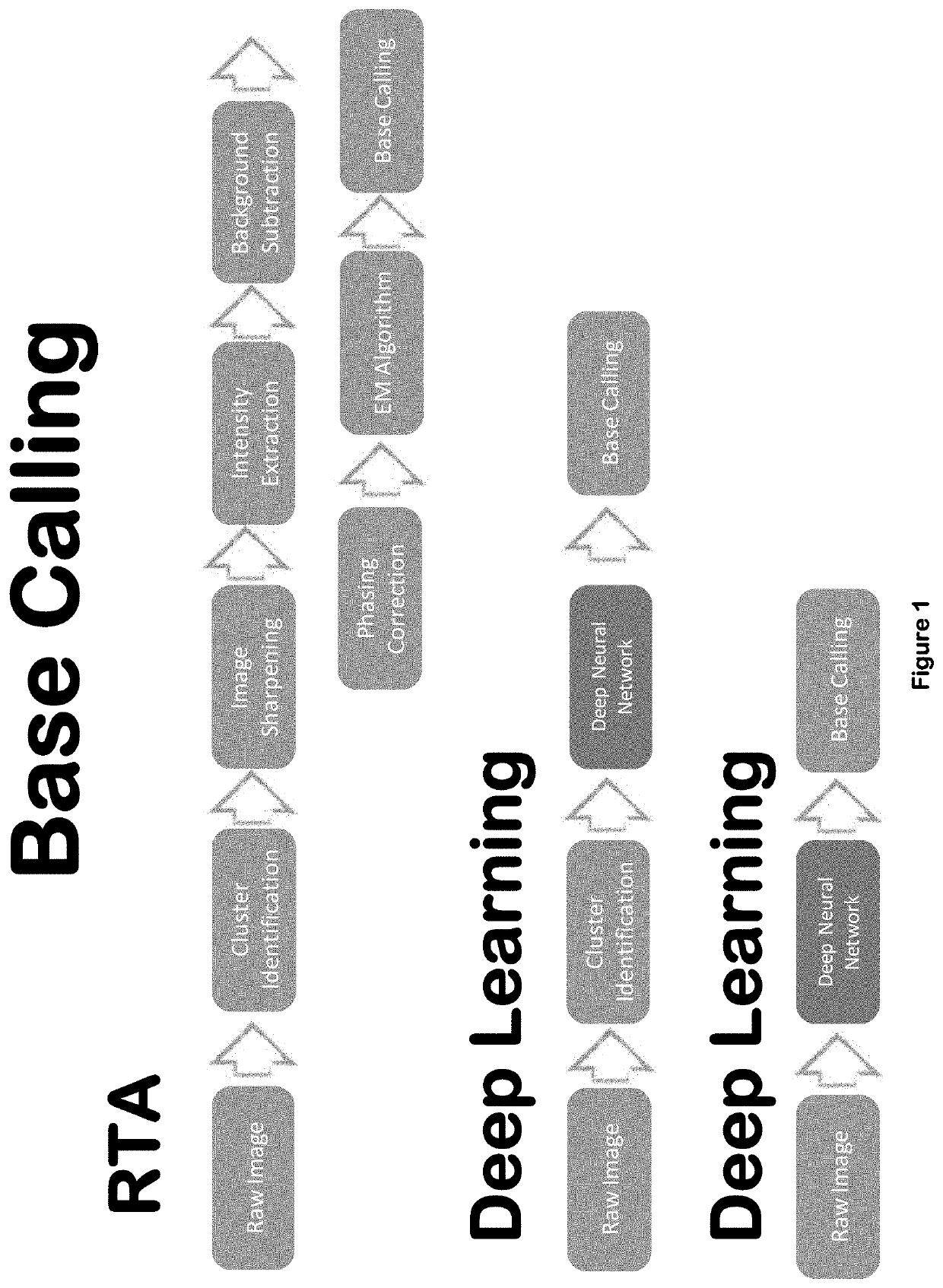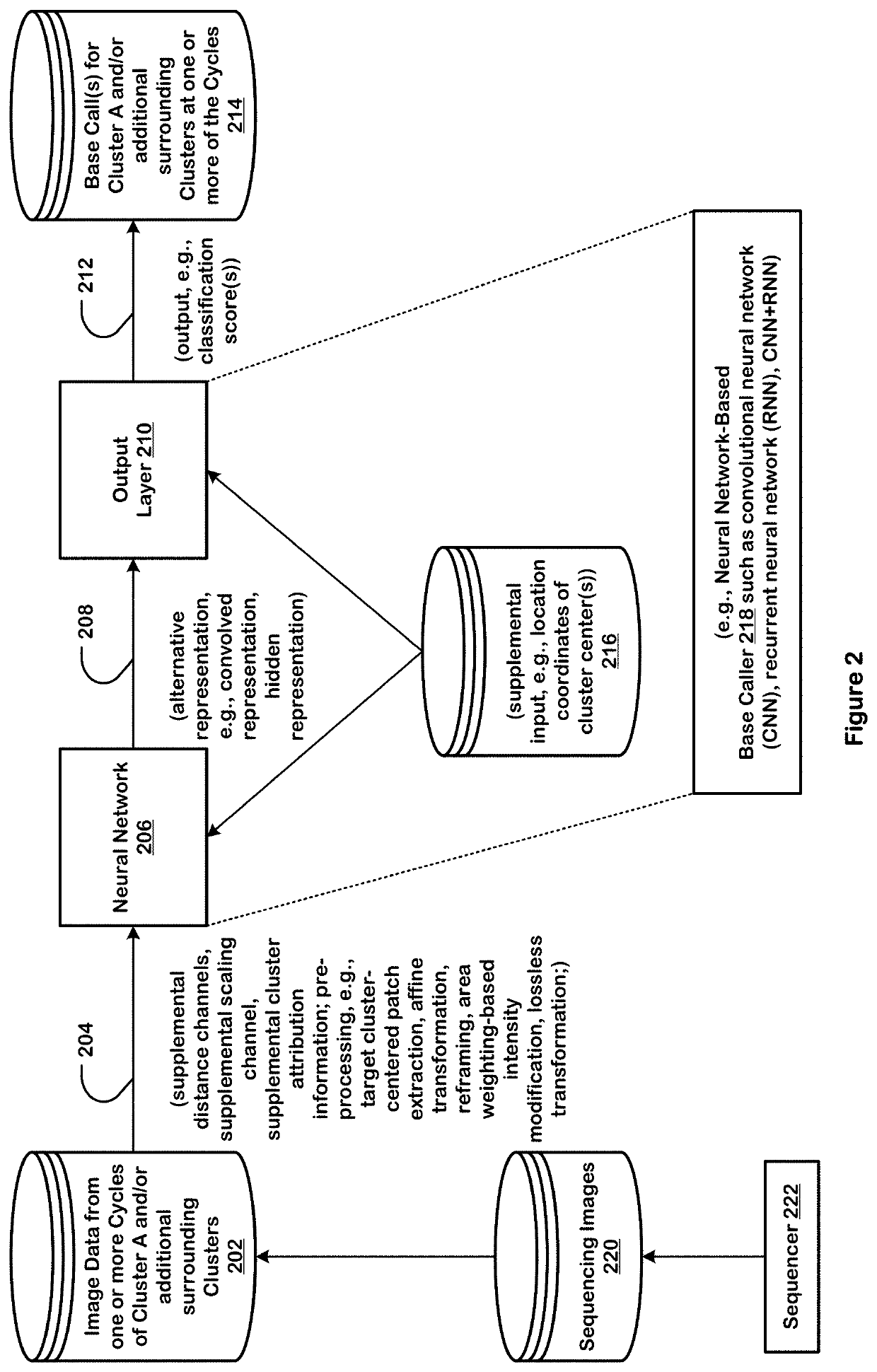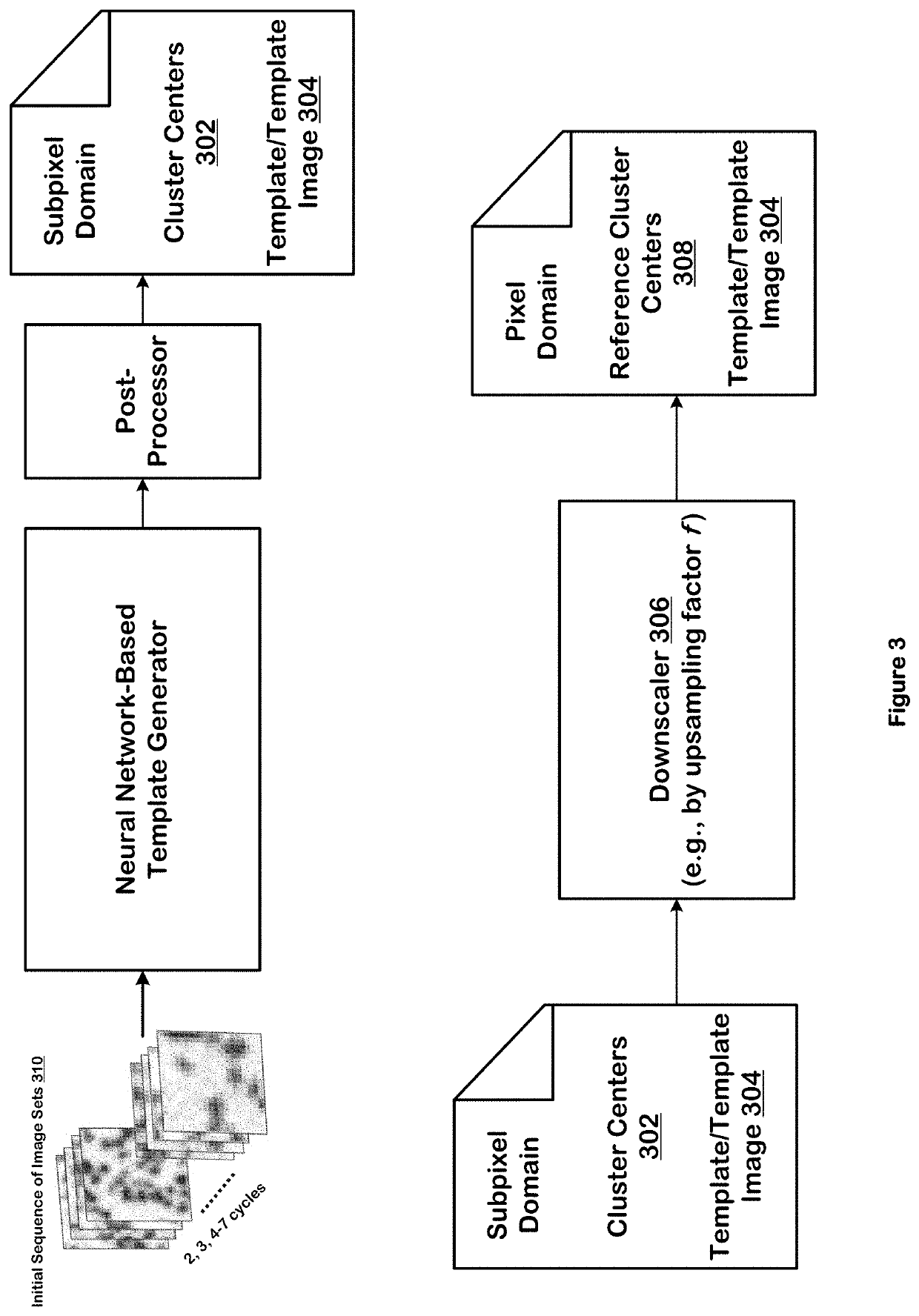This has the potential of connecting a region to the wrong cluster center, but that potential is low.
Increasing density has the downside of increasing
background noise when reading a cluster that has an adjacent neighbor.
This occurs due to the finite accuracy of the movements of the sensor's motion stage and also because images taken in different frequency channels have different optical paths and wavelengths.
Distance mapping, if provided, is difficult to perform across a whole context area unless every pixel has its own distance map over a whole context.
This occurs due to the finite accuracy of the movements of the sensor's motion stage and also because images taken in different image / frequency channels have different optical paths and wavelengths.
First, we explain why distance information calculated without accounting for cluster shapes is prone to error.
However, as discussed above, images captured at different sequencing cycles and in different image channels are misaligned and have residual registration error with respect to each other.
This has the potential of measuring a center-to-center distance to the wrong cluster, but that potential is low.
However, the reframing may not be feasible with
base calling implementations involving multiple clusters because there the image patches contain multiple central cluster pixels that are base called.
Aligned input may be used when calculation of the distance channels is not desired (e.g., due to compute limitations) and reframing is not feasible.
The reframing is not feasible here because the image patches contain multiple central cluster pixels that are being base called.
As convolutions become deeper, information can be lost.
For example, improvements in sequencing
chemistry require quality table recalibration to accurately
score the new data, which consumes a substantial amount of
processing time and computational resources.
Second, for a same sequencing instrument, they obviate the need of recalibration when characteristics of the sequencing instrument change.
Furthermore, the sequencing
system 6300A may issue warnings to a user if a user has provided user inputs that are generally not acceptable for the selected
assay protocol.
However, in some implementations the populations at each
analyte of an army can be heterogeneous.
Regarding the first, if the base quality of the read is low, it means that the observed sequence might be wrong and thus its alignment is wrong.
Repeated regions are more difficult to map and reads falling in these regions usually get low mapping quality.
In other implementations, however, the offsets between color channels drift during a run and / or between runs, making offset-driven template generation difficult.
Acquiring and storing large numbers of high-quality images typically requires massive amounts of storage capacity.
Additionally, once acquired and stored, the analysis of image data can become resource intensive and can interfere with
processing capacity of other functions, such as ongoing acquisition and storage of additional image data.
Additionally, it can reduce the storage required for intermediate data and limit the amount of data that needs to travel across the network.
Without these on-instrument, off-
network data reduction techniques, the image output of a fleet of
DNA sequencing instruments would cripple most networks.
For example, by performing
image analysis and base calling on a simple
tower, heat production, laboratory
footprint, and
power consumption are kept to a minimum In contrast, other commercial sequencing technologies have recently ramped up their computing infrastructure for primly analysis, with up to five times more processing power, leading to commensurate increases in
heat output and
power consumption.
Analysis of the
sequencing data can often be computationally intensive such that it can be beneficial to perform the methods set forth herein in real time or in the background while other
data acquisition or analysis algorithms are in process.
If computational infrastructure requirements grew proportionately, large
genome-scale experiments would remain out of reach to most researchers.
Moreover, the operations of the methods described herein can be sufficiently complex such that the operations cannot be mentally performed by an average
human being or a person of ordinary skill in the art within a commercially reasonable time period.
For example, the methods may rely on relatively complex computations such that such a person cannot complete the methods within a commercially reasonable time.
The input data has cross-cycle registration error between pixels across the image tensors and cross-image channel registration error between pixels within the image tensors.
 Login to View More
Login to View More  Login to View More
Login to View More 


